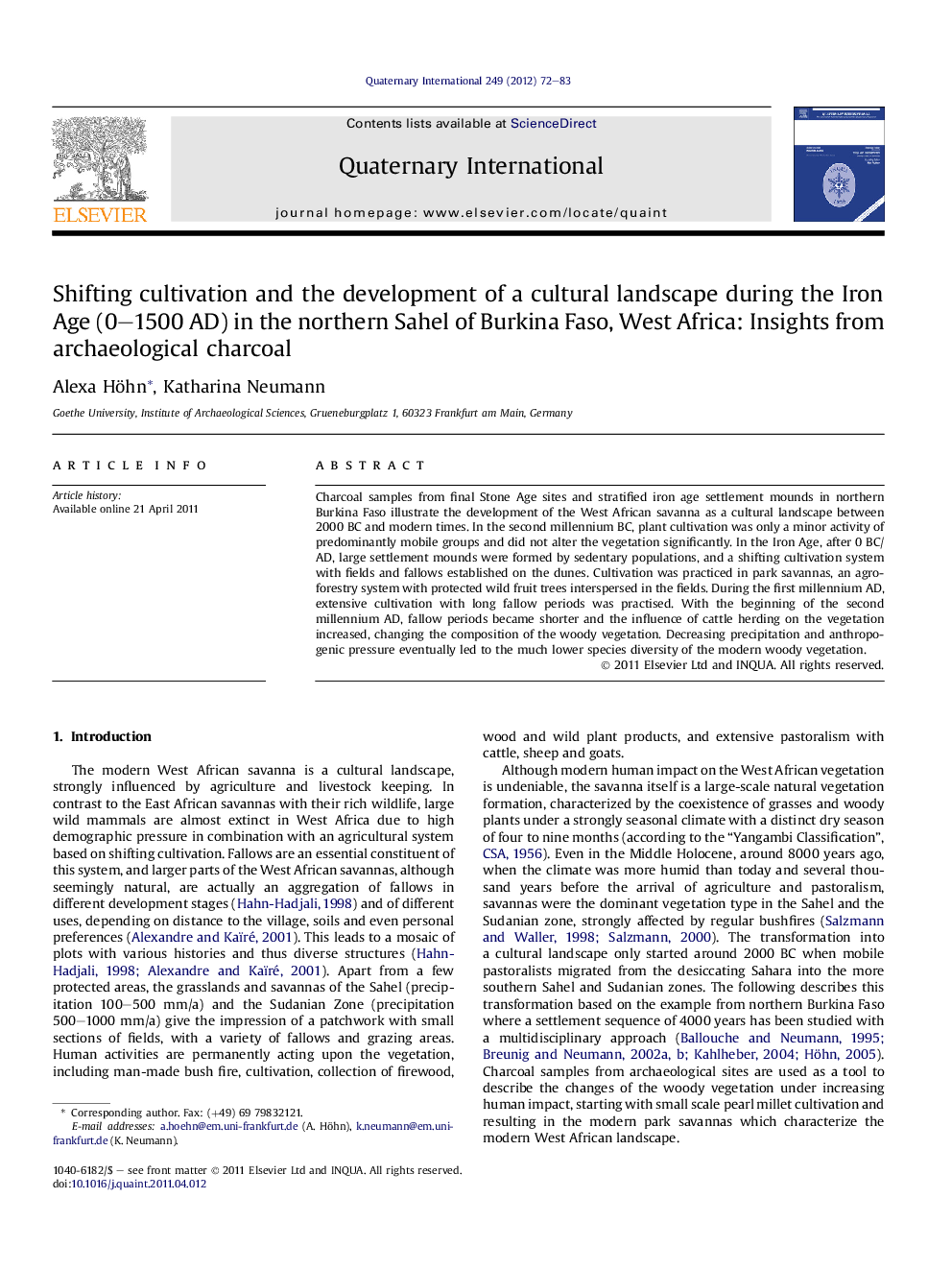| Article ID | Journal | Published Year | Pages | File Type |
|---|---|---|---|---|
| 7453082 | Quaternary International | 2012 | 12 Pages |
Abstract
Charcoal samples from final Stone Age sites and stratified iron age settlement mounds in northern Burkina Faso illustrate the development of the West African savanna as a cultural landscape between 2000 BC and modern times. In the second millennium BC, plant cultivation was only a minor activity of predominantly mobile groups and did not alter the vegetation significantly. In the Iron Age, after 0 BC/AD, large settlement mounds were formed by sedentary populations, and a shifting cultivation system with fields and fallows established on the dunes. Cultivation was practiced in park savannas, an agroforestry system with protected wild fruit trees interspersed in the fields. During the first millennium AD, extensive cultivation with long fallow periods was practised. With the beginning of the second millennium AD, fallow periods became shorter and the influence of cattle herding on the vegetation increased, changing the composition of the woody vegetation. Decreasing precipitation and anthropogenic pressure eventually led to the much lower species diversity of the modern woody vegetation.
Related Topics
Physical Sciences and Engineering
Earth and Planetary Sciences
Geology
Authors
Alexa Höhn, Katharina Neumann,
